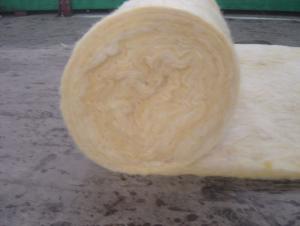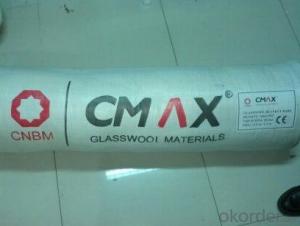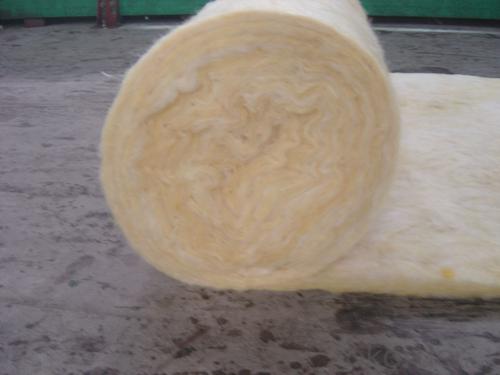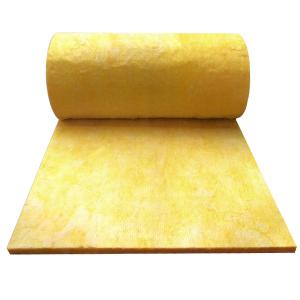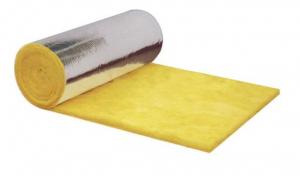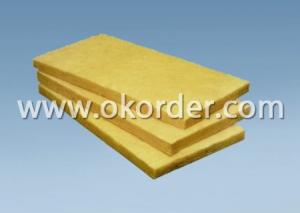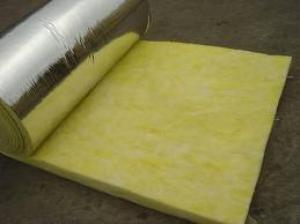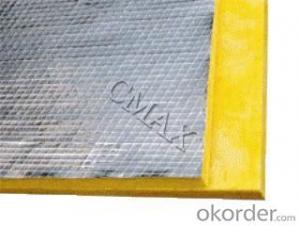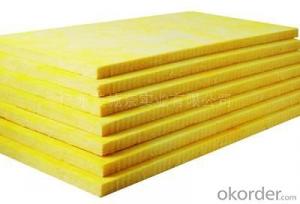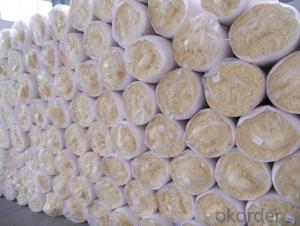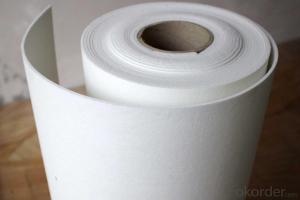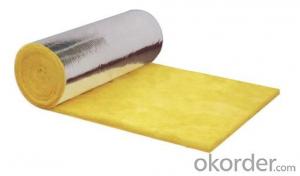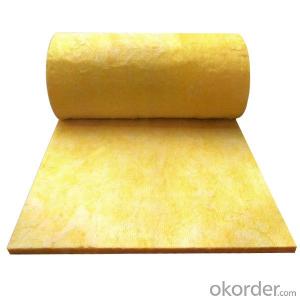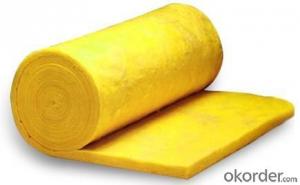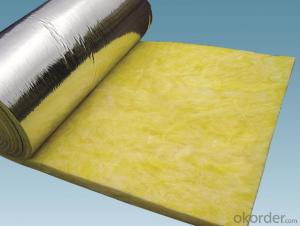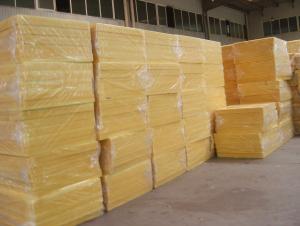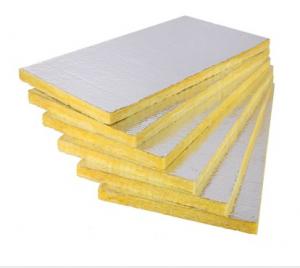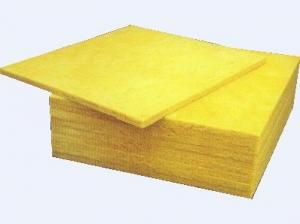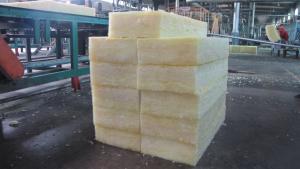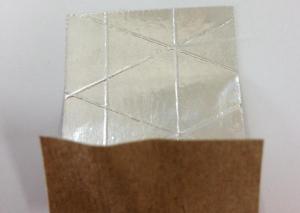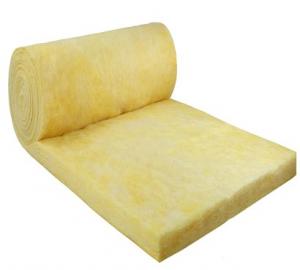Glass Wool Building Thermal Insulation Blanket Bare
- Loading Port:
- China Main Port
- Payment Terms:
- TT OR LC
- Min Order Qty:
- -
- Supply Capability:
- -
OKorder Service Pledge
OKorder Financial Service
You Might Also Like
Production Description
Glass wool blanket is in flexible form for ease of installation over large areas. Both products are available to order with a wide range of density and thickness, and with various types of facing applied.
Standard Size
Item | Unit | Index |
Density | Kg/m3 | 10 - 48 |
Thickness | mm | 25-150 |
Width | mm | 1200 |
Length | mm | 5000-30000 |
Remark:
Other sizes available upon request Facing materials can be applied upon request
Technical Data
Item | Unit | Index |
Average Fiber Diameter | μm | 5-7 |
Water Content | % | ≤1 |
Grade of Combustibility |
| Non-Combustible Grade A |
Thermal Conductivity ( 25℃) | W/mK | 0.038- 0.045 |
Reshrinking Temp | ℃ | ≥250 |
Hydrophobic | % | ≥98 |
Moisture Rate | % | ≤5 |
Noise Resistant Coefficient (NRC) |
| 0.75 |
Slag Inclusion Content | % | ≤0.3 |
Application
Glass Wool are widely used in public, commercial and residential buildings as well as industrial plants, for applications such as roofing, external wall, partition wall and floating floor to provide fire protection, thermal insulation, acoustic control and condensation control.
- Q: How about the sound insulation performance of glass wool felts?
- Fix the glass wool in the wall with pegs, then cover it with plywood, after laying up with wooden surface, nail the wood again.
- Q: These two kinds of glass wool are used as insulation materials, but one keeps 0.3 in specific gravity while the other keeps 0.5 in specific gravity. Which one should be chosen?
- Generally, materials with high density have better insulation effect, consequently leading a relatively higher price. You can make a layer of polyurethane on the outside. Specific gravity is another way of saying density. Materials' thermal insulation effect is related to density. So if you want to get better thermal insulation effect, you can make a layer of polyurethane on the outside. It is noted that common polyurethane has a maximum temperature of 100 degrees, while high-temperature polyurethane requires 120 degrees.
- Q: What are the disadvantages of glass wool? What are the technical limitations in application?
- Each insulation material has its own advantages and disadvantages. Let's take glass wool and rock wool as an example. Glass wool is less irritating to the workers' skin than than rock wool is in construction workers, but we can not say that the glass wool is not irritating at all. Besides, the melting point of glass wool and rock wool is different. The thermal insulation effect of glass wool is better than rock wool when they have the same bulk density and thickness.
- Q: Which kind of soundproof cotton is the best for decorative gypsum board partition ? Mineral rock wool or glass wool?
- The upstairs answer is wrong. rock wool is made of basalt through melting and spining, rather than asbestos. Asbestos and rock wool are two different things. Please check soundproof walls. From the aspect of soundproof effect, it is better to combine rock wool and glass wool, with the former insulating low frequency and the latter insulating high frequency. Unit weight should be above 80k. In terms of construction, they are similar. Rock wool may be more difficult for construction workers but it is cheaper than glass wool.
- Q: Who can tell me about the unit weight of glass wool board?
- Glass wool has a good sound absorption performance in the high-frequency sound. The main factors affecting the centrifugal glass wool' sound absorption performance are thickness, density and air flow resistance, etc. Density is the weight per cubic meter of materials. 1. with the increase of thickness, the low frequency sound absorption coefficient significantly increases, but there is little change in the high frequency (high frequency absorption is always larger). 2. thickness is the same, the unit weight increases, the low frequency sound absorption coefficient also increases; but when the unit weight increases to a certain extent, the material becomes dense, the flow resistance is greater than the optimum flow resistance, sound absorption coefficient decreases.
- Q: Do you have any recommendation about the glue used to adhere the glass wool to glass?fiber felt? Thank you.
- You can try sodium silicate (sodium metasilicate) which is used to glue cartons.
- Q: what is the specification of glass wool sound-absorbing board?
- General specifications include 600 * 600600 * 500 * 1200-1200/12000300/400 mm thickness is usually 14 to 22 mm. . Glass wool belongs to a category of glass fiber, and is a kind of man-made inorganic fiber. Glass wool is a kind of spongiform material shaped by making melten glass fibering, it's chemical content belongs to glass and is a kind of inorganic fiber. It has good molding, small bulk density, low thermal conductivity, good thermal insulation and heat insulation, good sound absorption, corrosion resistance and stable chemical performance. Centrifugal glass wool belongs to porous materials and has good sound absorption performance. Centrifugal glass wool can sound-absorbing reason is not due to the rough surface, but because of there exist a large number of internal and external connected tiny pore and holes. When sound waves enter on the centrifugal glass wool, sound waves can follow the internal pore into inner material, cause the vibration of air molecules in space. Because of the friction of air viscous resistance and air molecules and pore wall, sound energy is wore down after being transferred into heat energy.
- Q: Rubber and plastic or glass wool, which one more suitable for suspended ceiling thermal insulation materials?
- The performance will be better, but the quality of glass wool must be considered, the heat conductivity coefficient is the key. But now the quality of the domestic glass wool is not so good, you'd better use rubber and plastic.
- Q: Glass wool and pef air conditioning insulation material, which one is better?
- So many air-conditioning installation company will choose this new PEF thermal insulation cotton and rubber and plastic thermal insulation material. Generally many companies prefer to use PEF thermal insulation cotton for duct, and rubber and plastic thermal insulation material for water pipes. Productions can be selected according to each person's favor, but we can't only select the cheap products when selecting, and we should choose guaranteed green products.
- Q: What are the differences among glass wool, rock wool and mineral wool?
- Glass wool is usually used in the industrial field, that is glass?silk. Rock wool is generally used in external thermal insulation of pipelines, and in the sound insulation of partitions or the thermal insulation of ceilings. You must know about mineral?wool?boards, generally, they are used in office as suspended ceilings. The main function of which is sound absorption. If you want thermal insulation and sound absorption, you can use them both, haha.
Send your message to us
Glass Wool Building Thermal Insulation Blanket Bare
- Loading Port:
- China Main Port
- Payment Terms:
- TT OR LC
- Min Order Qty:
- -
- Supply Capability:
- -
OKorder Service Pledge
OKorder Financial Service
Similar products
Hot products
Hot Searches
Related keywords
